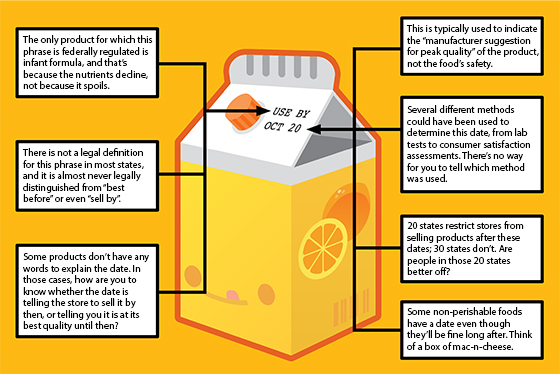Have you ever bought a gallon of milk or a package of crackers with a mysterious date on it? Were you completely baffled as to whether it was the production date, sell by or use by date? So what did you do when that day came and your gallon was still half full? If you’re like 90 percent of americans, you may have throw it away because you assumed the date correlated to the milk’s food safety implications. Better safe than sorry.
Food waste in America is astronomical-we throw away 40 percent of the food we produce, or $165 billion dollars a year. To shed light on the dire situation The Natural Resources Defense Council (NRDC), in partnership with the Harvard Food Law and Policy Clinic, recently released The Dating Game: How Confusing Food Date Labels Lead to Food Waste in America. The corresponding infographic below breaks down the un-regulated food dating system, illustrating how misguided the “better safe than sorry” mentality actually is. According to the report, the only food product for which date labeling is required is baby food. So that means all those juice, milk and egg date labels you’ve grown to “trust” are created by the food manufacturers themselves with no uniform or official guidelines. The report also notes that only 20 states prohibit the sale of foods after their sell by date.
As breaking news of recalls like Salmonella peanut butter and E. coli spinach increase, people are paying more attention to the food they buy as well as the labels on it. Demand for sustainable meat and fish, local produce and GMO labeling are growing rapidly, too. But this new study sheds light on the fact that we need an accurate, uniform and intelligible date labeling system, one that’s intended to educate consumers and bring down our staggering rate of food waste.






